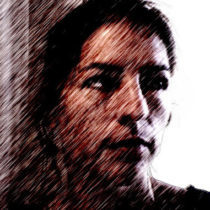Forum Replies Created
-
AuthorPosts
-
June 15, 2011 at 8:19 pm #167781
 SusannahParticipant
SusannahParticipantYou are so smart to do this! It wouldn’t be a bad idea to learn the fundamentals of Adobe Creative Suite also.
September 10, 2010 at 2:19 pm #167843 SusannahParticipant
SusannahParticipantHuh. I was confused about the scale of this, esp the plants, which in the photo with the deer looked more heathery or ground cover-like. I don’t think it does need to be mowed; in fact, I’d be interested to see what it looks like if allowed to grow for an entire season. Maybe the waves could be differentiated by planting each side with grasses that change color in a slightly different way (it is supposed to reveal seasonal changes). If the grasses were at full height and fully expressed, it would add a whole to dimension to the idea of a wave field.
August 31, 2010 at 2:01 pm #168132 SusannahParticipant
SusannahParticipantAwesome, Josiah; thanks for answering my question! I love the idea of EU as you defined it. Now we just need to put our heads together and figure out the approach. Maybe get a symposium going on EU, step 2.
August 25, 2010 at 1:49 pm #168138 SusannahParticipant
SusannahParticipantDavid,
“We don’t know but we should keep trying to figure it out” seems to be the answer to all hypothetical design questions. I guess it’s why process is emphasized so much in some of the more theoretical M.L.A. programs.
Why do you think the conference ignored people? Maybe the social aspects of urbanism were not mentioned because they are understood. People are the drivers and beneficiaries of urban form, and as designers are all trying to be driving, so to speak, the forms. Maybe we’re assuming too much by assuming we can design great social structures along with buildings, parks and streets. Utopian hubris, or something like that.
August 24, 2010 at 7:10 pm #168140 SusannahParticipant
SusannahParticipantJohn, have you read Inquiry by Design by John Zeisel? It’s a really excellent discussion of how the iterative process (our design process at its best) can be an effective research tool. I read it while I was preparing to do my Master’s Project, which incorporated design and research, and it was a great book. And readable. We talked about Praxis in school and I think really made some effort to incorporate our research and design. I’m not sure how successfully since our designs were never actually built. It’s definitely something I need to think about more.
So, did you bring this subject up because it’s what the Harvard book talks about? I’m still trying to get to the bottom of the original question here.
August 23, 2010 at 6:12 pm #168144 SusannahParticipant
SusannahParticipantI thought this would be a discussion about ecological urbanism. I had not heard of it but it sounds interesting. Is it sustainable urban design, or is it design that purports to connect the urban fabric with the larger environment?
February 25, 2010 at 10:41 pm #171345 SusannahParticipant
SusannahParticipantThey list both, but I have found LA Graphic Standards to be a better resource.
March 9, 2009 at 3:49 pm #175923 SusannahParticipant
SusannahParticipantIn states with recent practice acts, there are numerous licensed LA’s who have been “grandfathered” in; i.e., never had to take the tests, and guess what? Some of them are involved in writing the test! It’s one thing to be able to identify a canon of important skills and information for licensure. It takes an entirely different kind of ability to write a fair exam. The boards that write tests like the SAT and GRE have been studying their own methods and adjusting the exams for decades…CLARB could use a little of that help, I think.
March 9, 2009 at 3:05 pm #175924 SusannahParticipant
SusannahParticipantFrom reading your comments I’m getting the impression that they send you a list of comments, not actual redlines of your vignette. Is this correct? If so, it is absolutely ridiculous.
-
AuthorPosts


